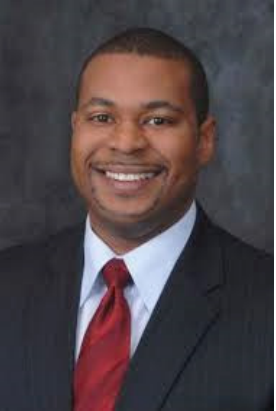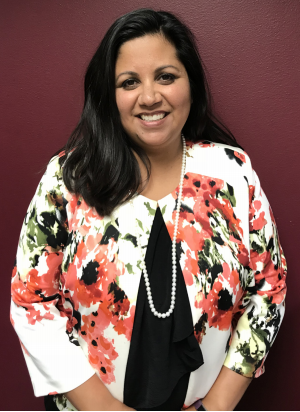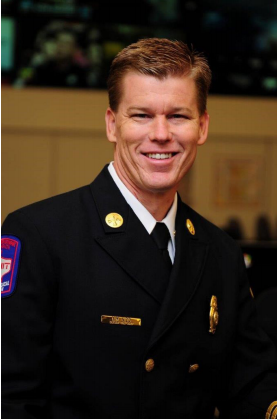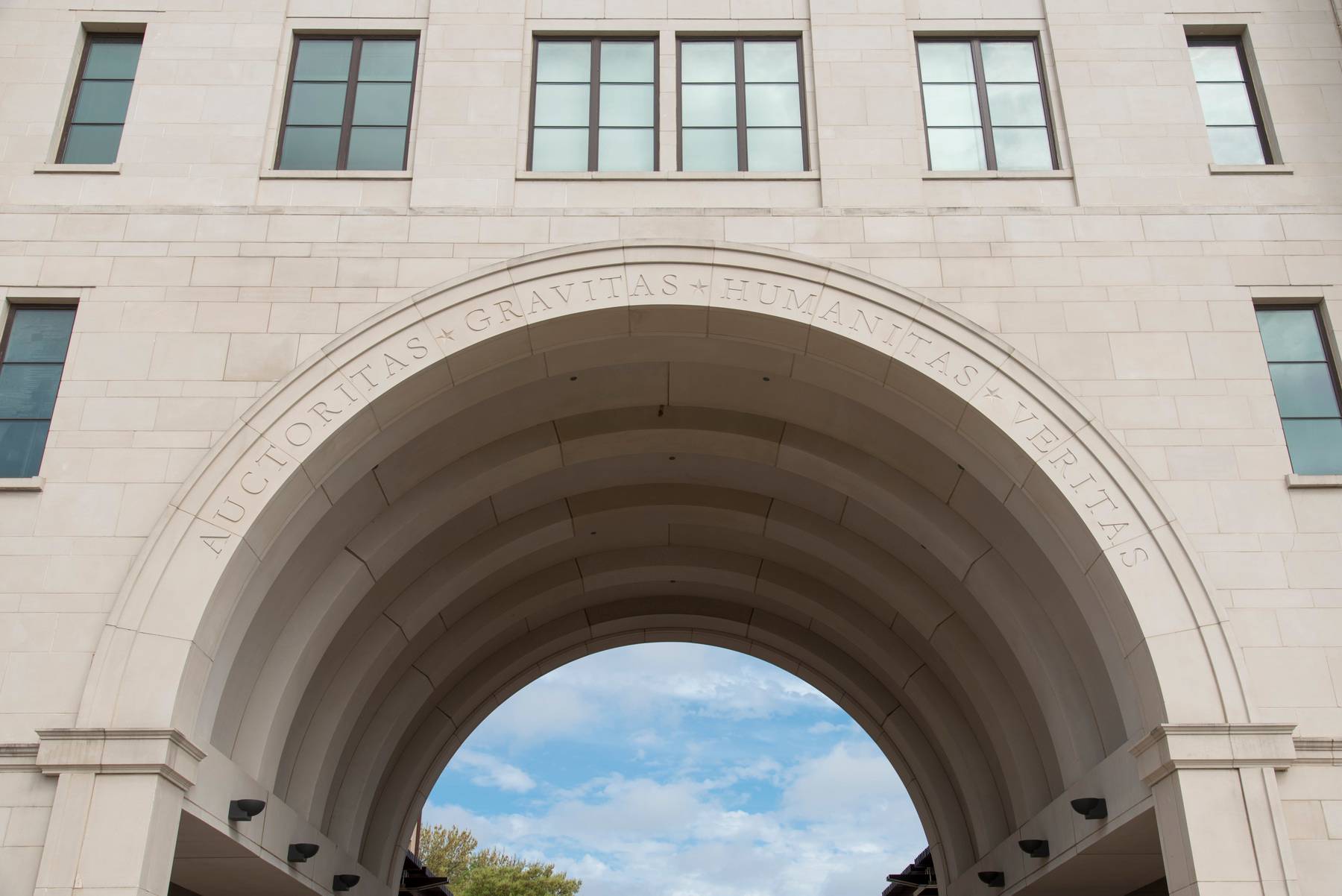Brion Oaks
Chief Equity Officer
City of Austin, TX

Alumnus Brion Oaks graduated from Texas State University with his MPA in 2005. He’s had a celebrated career with the American Heart Association, winning several awards for his work representing vulnerable populations and reducing the disparities in cardiovascular health care in regards to prevention and treatment of disease. His applied research project (ARP), “An Evaluation of the Snack Tax on the Obesity Rate of Maine”, was cited by the World Health Organization in their report “The Effect of Fiscal Policy on Diet, Obesity and Chronic Disease: A Systematic Review”. Oaks is currently the Chief Equity Officer for the city of Austin, TX, the first to hold that position. We asked him how the Texas State MPA program helped prepare him for his career and what advice he has for current and future students:
Did the MPA program and the Applied Research Project (ARP) prepare you for career in public service?
The MPA program at Texas State University definitely prepared me not only for a career in public service, but also non-profit management. The course work I took in the MPA program helped me understand the core principles of organizational management along with strategies to evaluate the impact and effectiveness of the services and activities one provides. It also laid a foundation for me to be able to conduct analysis and research of situations in order to identify the best possible solutions to a problem.
What were your most valuable experiences during your time in the MPA program?
The most valuable and rewarding experience for me in the MPA program was the completion of my ARP. I’ll be honest, I was so nervous at the beginning of the process to develop the applied research project. I looked online at so many great projects students completed before me and really questioned if I would be capable of doing the same. The guidance and support from the faculty was invaluable. The ARP was an opportunity for me to apply the skills and knowledge I gained from the coursework in the MPA program, truly making it applicable. I was able to take an issue, conduct an analysis, and make recommendations to move forward. This is a process that plays out for me almost every day in my career, so I really enjoyed having the experience and opportunity to showcase what I was capable of in the ARP.
In your role as Chief Equity Officer for Austin, what are some valuable pieces of advice you would give to MPA students?
In the role of public service many MPA graduates will end up in careers trying to solve some of government’s most challenging issues ranging from homelessness and gentrification to environmental impact and health disparities, to name a few. Traditional approaches to tackling many of these issues in our community have historically centered on transactional approaches. Transactional changes are those that help individuals negotiate existing systems but tend to leave those structures in place. They may result in short-term gains for communities, but not long-lasting impact as they don’t get to the root cause of issues. I would challenge students to look at how they can bring transformative approaches to the workplace. Seek to tackle problems by cutting across multiple institutions, industries, and practices. The focus should be on changing policy and organizational culture. Transformative work seeks to alter the way an institution operates as to provide sustainable and long-term change.
What are some current projects you are working on that you’d like the world to know about?
I’m really proud to be the City of Austin’s first Chief Equity Officer. In this capacity I’m responsible for working with city leadership and the community to create an equity framework to be adopted by all departments and offices of Austin city government. My team and I facilitate dialogue and promote organizational practices that support the development and adoption of equity as a shared value. I serve as the technical expert in addressing equity as it is applied to city wide policies, programs, practices and budget decisions with an overall vision to make Austin the most livable city for ALL. One initiative I am really proud of is the development of Austin’s first equity assessment tool that is being used by city departments in order to evaluate how practices, procedures, and policies are impacting equity. We are one of a few cities nationally that have been doing this type of work to purposefully operationalize equity principles and priorities into our practice as city government. The Austin Equity Assessment Tool recently received the highest-level designation as a “STAR” commitment for its specificity, relevance, transformative potential impact, and on time completion rated by the International Open Government Partnership.
As an MPA alumnus, what advice would you give current and future students in the program?
I would encourage students to be courageous in their careers. Be innovative and creative and don’t be afraid to take a risk. I think you learn the most about yourself in those moments when things don’t go the way you want them to. When I reflect back on my career, it’s really the projects and initiatives that didn’t get off the ground or work the way I envisioned them which has taught me the most. I believe that having the courage to be bold and take a risk in your career can lead you in a direction to accomplish things that you never thought imaginable for yourself.
Evy Gonzales
Director of Strategic Research Initiatives
Office of Research & Sponsored Programs, Texas State University

Evy Gonzales, a 2012 graduate of the MPA program, is currently Director of Strategic Research Initiatives in the Office of Research and Sponsored Programs and has been with Texas State University for 16 years.
Gonzales works closely with the university faculty, helping them to apply for and secure research grants. Despite this close relationship, Gonzales did not fully understand the tenure process and why it sometimes held faculty back from pursuing those grants. As someone who constantly strives to do better in everything she undertakes and is always ready to face new challenges, she wanted to take an empirical approach to address this issue. “My applied research project (ARP for the MPA program) was around external funding and tenure. I wanted to relate to faculty…to understand the extreme pressure and time constraints that they’re under.” Gonzales came to learn that their plate is full and many times a faculty member is encouraged by his or her own department and college, from a protective standpoint, not to pursue grants until they have their publications in order. Gonzales’ ARP helped her target the types of support and resources the faculty need, how she can help them with that, and where she needs to find them help otherwise. This can be as simple as hosting events for faculty to meet, talk, and discuss the on-going research happening at the university and opportunities for potential research collaboration amongst them.
Previously, Gonzales’ job consisted mainly of proposal coordination. By regularly reviewing grant proposals, and through her own curiosity and initiative, she would often become caught up in the science of their work. When she learned about new prospects related to the work of faculty members she would encourage them to seize those opportunities. “This was something that didn’t really exist here… we really didn’t do a lot of lead generation” she observes. Shortly after she was awarded her MPA, Gonzales received an email regarding a 3-day intensive workshop for researchers to learn how to do a better job at finding funding. Relating to her work, she approached her boss with the opportunity, who approved and in turn shared with her a possible new position for the department which would incorporate the skills she would acquire from the work shop as well as finding additional funding opportunities for faculty. Gonzales took on the added responsibilities and within a few months it quickly became clear generating leads was working. She notes, “because I got my MPA I was able to create a new position for myself… I say to myself that it’s not necessarily what I can contribute to faculty, it’s about what faculty contributed to me, I have learned from them what needs to happen here and that’s helped me to really do my job better, and the MPA program helped with that.”
“Every class that I took had some applicability” to the job, observes Gonzales. She was able to directly relate her course work to issues that developed within her daily work. Two courses, and professors, stand out to her today. Public Finance Administration with Dr. Kay Hofer (Professor Emeritus, now retired) and the applied research course work with her advisor Dr. Pat Shields, who in turn became a mentor to Gonzales. “I can’t thank her enough for putting me on the right path and for giving me the tools I still use today.” Her advice to current MPA students, whether they are already doing what they love and just want to do it better, or if they’re still searching, is to research and write about something that interests them. Gonzales acknowledges the opportunities she was able to create for herself after the successful completion of the MPA program. She takes pride in her work and in particular the opportunities she is able to create for faculty members at Texas State University and contribute towards the advancement of knowledge and scholarship.
Nim Kidd
Chief of Emergency Management, Texas Division of Emergency Management (TDEM)
Vice Chancellor for Disaster & Emergency Services, Texas A&M University System (TAMUS)

Nim Kidd graduated from Texas State University with a Masters in Public Administration in 2015. His applied research project (ARP) was entitled “Developing a Practical Ideal Type for Social Media Missing Persons Notifications: A Texas Perspective.” He currently serves as Chief of Emergency Management for the Texas Division of Emergency Management (TDEM) and is the newly appointed Vice Chancellor for Disaster and Emergency Services at Texas A&M University System (TAMUS).
Nim Kidd began his career with the San Antonio, TX Fire Department (SAFD), serving in various positions such as Firefighter, Fire Apparatus Operator, Lieutenant in charge of the SAFD Technical Rescue Team, Captain in charge of the SAFD Hazardous Materials Response Team, and District Fire Chief as the City Emergency Manager. “I had the glorious opportunity,” Kidd notes, “to work with some of the bravest and most dedicated men and women I have ever met.” It was his work as the San Antonio Emergency Management Coordinator that led him down the path to his current position in emergency management for the state of Texas. He observes that “it is the spirit of the first responder that provides synergy with emergency management: a desire to help, a commitment to health and safety, the ability to remain flexible and adaptive, an eagerness to learn and, if needed, a willingness for self-sacrifice, and a bias to action.”
The Texas Division of Emergency Management (TDEM) was first created during World War II and quickly grew into the organization we know today. It is responsible for not only assisting cities, counties, and other state agencies in developing their emergency programs, but also with managing state-wide pre- and post-disaster mitigation, supplying training and preparedness activities, recovery programs, and ensuring provisions for effective emergency response. The state of Texas has the unfortunate honor to be number one in disasters, making this organization all the more essential. “This certainty in Texas provides a wealth of opportunities and experiences through which to grow in this field,” Kidd admits. Kidd applied to the Texas State University MPA program as a way to add value to his past work experiences in San Antonio. “As I concurrently worked as the Chief of Emergency Management and finished my degree, I was able to apply my studies in public administration to my every day work experiences. The strength of this relationship provided the foundation for my experiences with Hurricane Harvey and its aftermath.”
TDEM and the Texas state government have been looking for ways to streamline the emergency management process for years. Hurricane Harvey became the catalyst. It began shortly after landfall when Governor Greg Abbott created the Governor’s Commission to Rebuild Texas, appointing John Sharp, Texas A&M University System Chancellor and another illustrious Texas State University Alumnus, as its leader. “What many Texans don’t know is how many Texas A&M University System (TAMUS) entities were already part of the Texas Emergency Management (EM) Council,” Kidd adds, “more than any other state agency or group.” While on the front lines in response and recovery efforts, the Governor’s Commission to Rebuild Texas released a report outlining 44 recommendations to strengthen emergency management in Texas (this report, Eye of the Storm, can be found on the governor’s website http://gov.texas.gov). As noted in the report, “the first of these was to reorganize state emergency management functions to unify the most critical emergency response and recovery functions.” As a result, TDEM will transition to operate under TAMUS with Kidd continuing at its head as Vice Chancellor of the A&M System, making it the only state emergency management agency in such a setting. This unification, Kidd remarks, will “simplify coordination and provide a more focused and consistent approach to emergency management.”
Along with the improved synergy of TDEM and TAMUS, a second action was issued by Governor Abbott in support of the Rebuild Texas report in the form of Executive Order GA-05. This action expands members of the Emergency Management Council to include all state university systems, such as the Texas State University System. This, too, will be a first in the country. “Together with other council members, these academic organizations will provide improvement in functions such as local government disaster assistance, emergency management training, mitigation and preparedness planning, and emergency first response.” Kidd is excited to add, “with this new merger, we will be able to add philosophical and scientific aspects to our decision making. We will create a decision-making matrix that includes experts from the Philosophical, Operational, Political, and Scientific arenas during disaster preparedness, response, recovery, and mitigation efforts. POPS will be a new model for decision making and action.”
When asked how students can prepare themselves for a career in emergency management, Kidd says “it is all about training, experience and teamwork.” He recommends looking for internships, whether with a city, county, or state emergency management organization. Other opportunities include working with a Voluntary Organization Active in Disaster (VOADs), a community program like Community Emergency Response Team (CERT), or volunteering for a community during or after a disaster takes place. “There is currently free online training from FEMA that provides introductory training to many emergency management concepts and programs,” Kidd remarks, adding that the Rebuild Texas report has also recommended developing a licensing program for emergency managers in Texas.
